After exploring Kawasaki City with its great Kawasaki Daishi Temple, the Chinese Shinshu-en Garden and the interesting Kanamara Festival, I also went to see the beautiful Sankeien Garden in Yokohama.
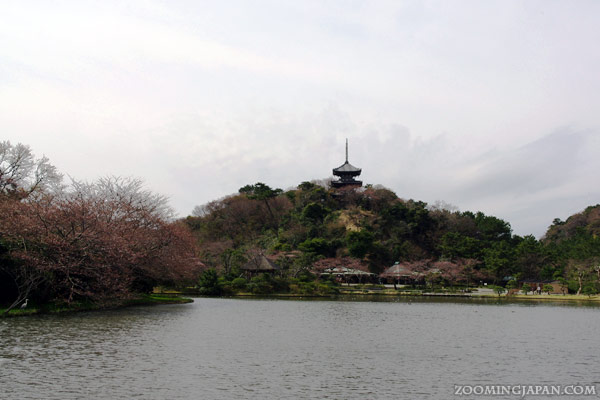
Sankeien Garden in Yokohama
Sankeien Garden (三溪園) is a traditional Japanese-style garden in Yokohama, Kanagawa Prefecture (where is that?).
Access to Sankeien Garden
The easiest way to access the garden is by bus. Buses leave from several spots in Yokohama such as Yokohama Sta., Sakuragicho Sta. or Motamachi Chukagai (China Town) Station. Get off at “Honmoku Sankeien Mae” bus stop. For more information please refer to this English pamphlet.
Alternatively you could also walk (~ 40 mins) from JR Negishi Station or take a bus ride from there.
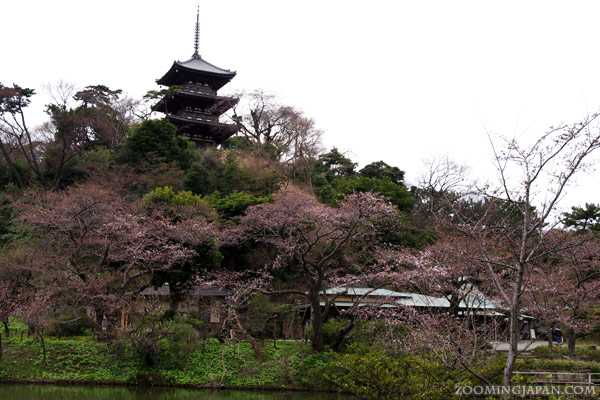
Sankeien Garden was designed and built by Sankei Hara (born as Tomitaro Hara, 原富太郎, 1868–1939). He was a successful businessman in Yokohama who became rich through his silk business.
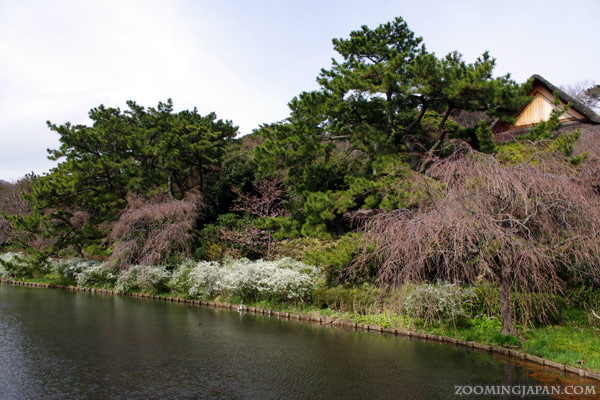
The garden is very spacious (~ 175,000m²) and its construction took almost 20 years starting in 1902.
Actually it consists of two gardens: the inner garden for Sankei Hara’s private use and the outer garden that became public in 1906.
With his fortune Sankei Hara bought almost all of the garden’s buildings from all over the country (e.g. Kamakura, Kyoto, Tokyo, Wakayama and Gifu Prefectures). Some of the facilities have been declared as Important Cultural Property.
A lot of the buildings were damaged during the Great Kanto Earthquake (1923) and WWII. In 1958 Sankeien was restored (almost) to its pre-war condition.
In 2007 Sankeien Garden was recognized as “Places of Scenic Beauty” by the Japanese government. No wonder as it’s famous for its beautiful views in every season!
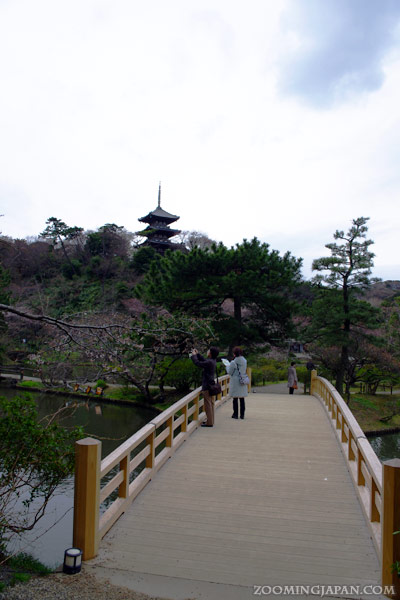
One of the first things you’ll see (already from far away) is the 3-story Pagoda of Old Tomyoji. Originally this pagoda is from Kyoto and was built in 1457 during the Muromachi Period. In 1941 it was moved to the Sankeien Garden in Yokohama. Currently it’s the oldest wooden pagoda in the Kanto region!
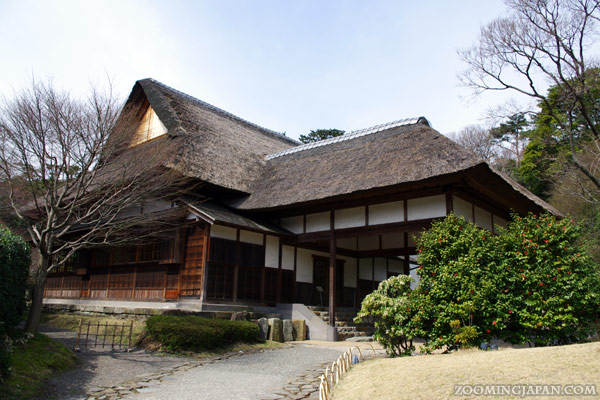
Kakushokaku (鶴翔閣) was built in 1920 by Sankei himself to be his private house. Many cultural and political figures visited him there. Nowadays it’s available for public use for many different occasions. It is part of the outer garden.
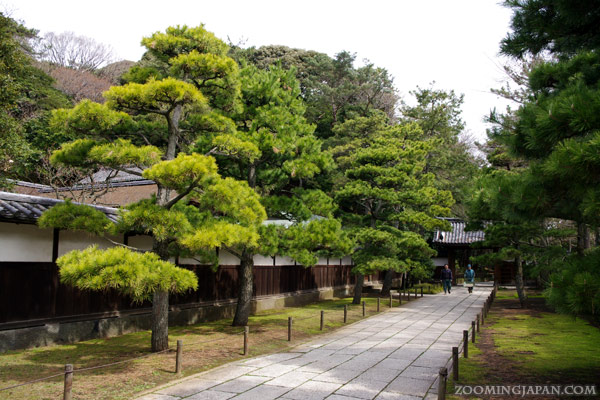
Gomon (御門), one of the gates that will lead you into the inner garden. It was built around 1708 during Edo Period and moved from Kyoto’s Higashiyama district during the Taisho Era.
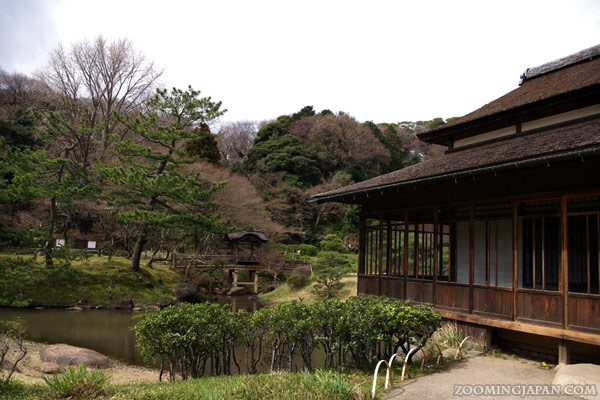
Here you can see part of Rinshunkaku (臨春閣) which was built in 1649 and moved from Wakayama Prefecture to this garden in 1917.
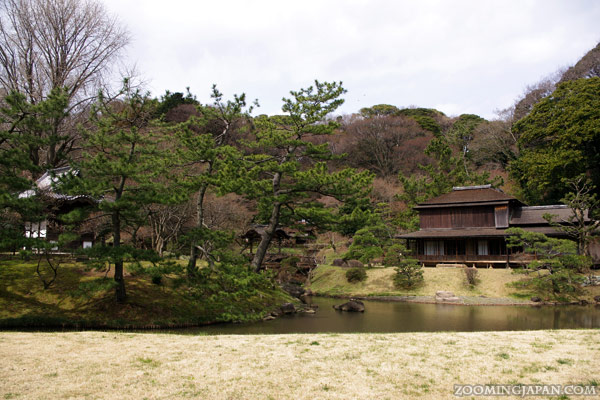
It was built by Yorinobu, the son of Ieyasu Tokugawa.
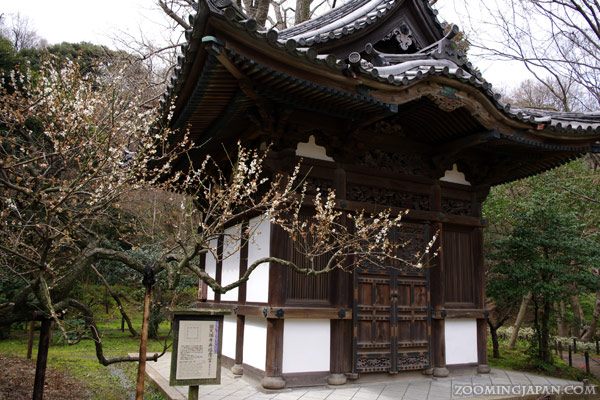
Juto Oido of old Tenzuiji (旧天瑞寺寿塔覆堂) was built in 1591 and moved from Kyoto in 1905. It was built by Hideyoshi Toyotomi, one of the most famous shoguns in Japanese history. It contains a juto (寿塔), a stone monument, to wish for his mother’s health and long life.
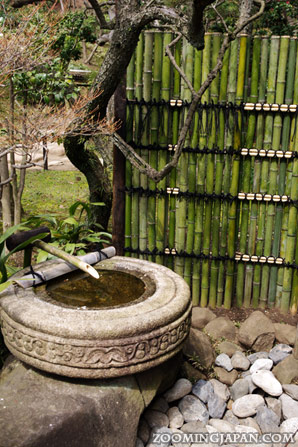
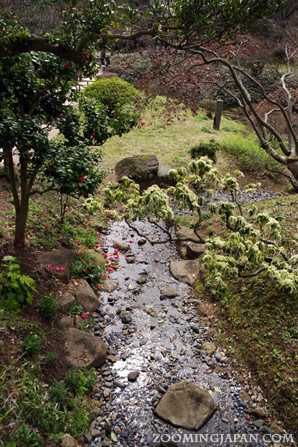
Apart from all those historically valuable and interesting buildings, the garden also offers a beautiful and tranquil landscape that is typical for Japanese gardens.
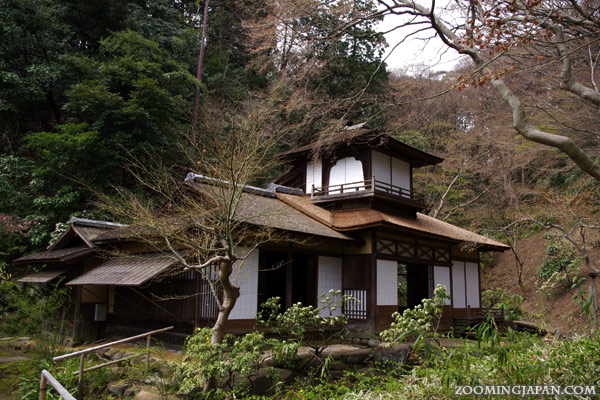
Choshukaku (聴秋閣) was built in 1623 and moved from Kyoto (possibly Nijo Castle) in 1922.
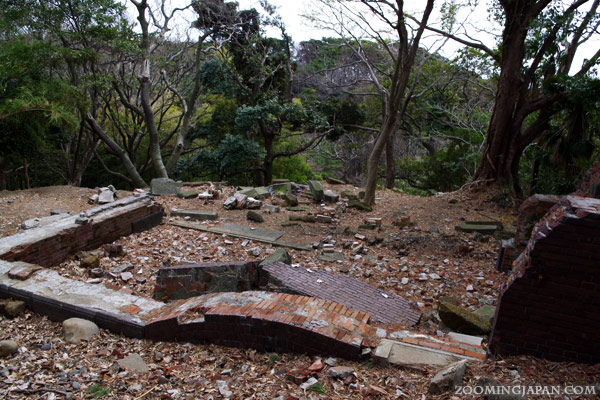
Shofukaku Observatory (松風閣) marks where the villa of the Hara family once stood.
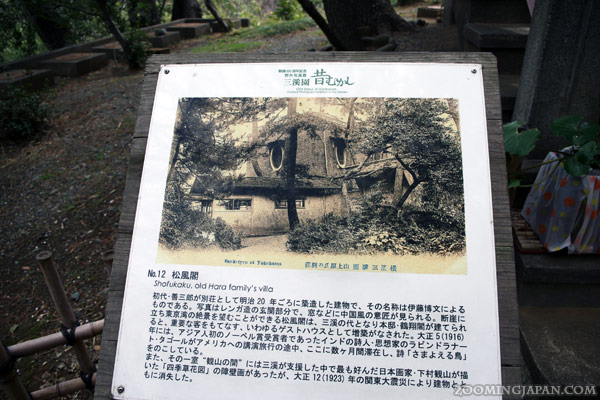
That’s how the villa looked.
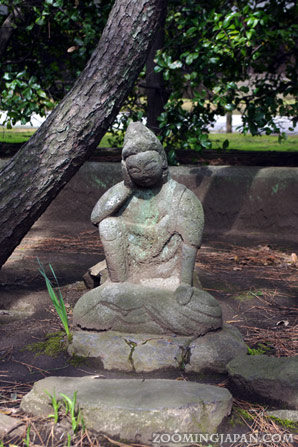
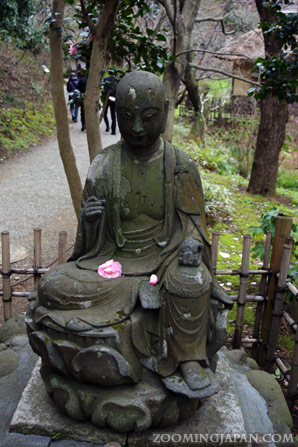
While there weren’t many, I really liked the few stone statues I found.
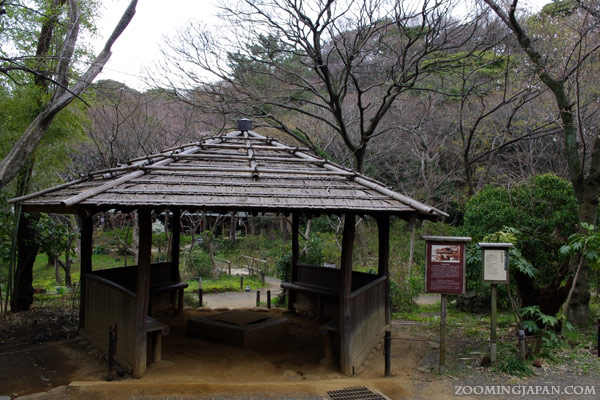
Here you see the Hatsunejaya (初音茶屋), a tea stall.
Since Sankeien was opened to the public in 1906 free tea was offered to visitors here.
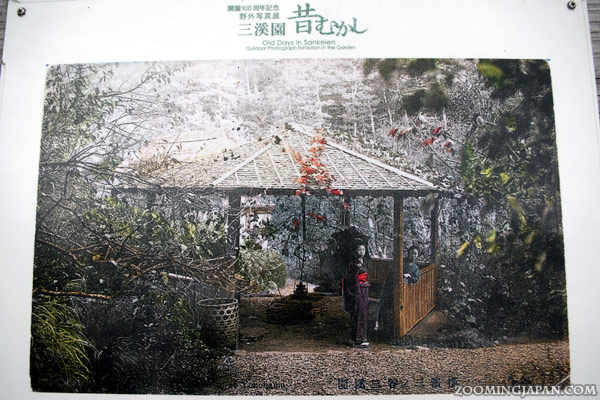
And here’s a photo of it from a long time ago. I love old photos like that!
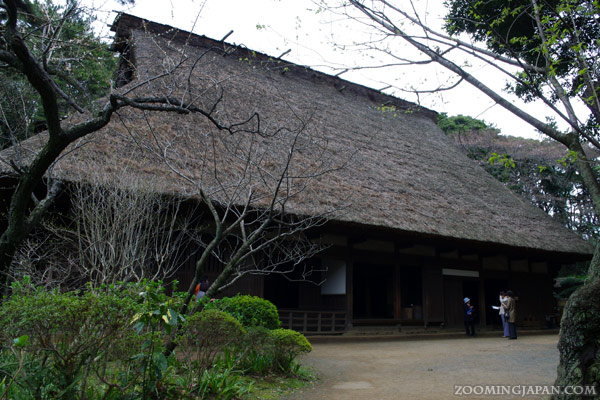
The Old Yanohara House (旧矢箆原家住宅) was built in Shirakawago (Gifu Prefecture) in the gassho-style around 1750. It was moved to the garden in 1960, because otherwise it would have been submerged by the construction of a new dam.
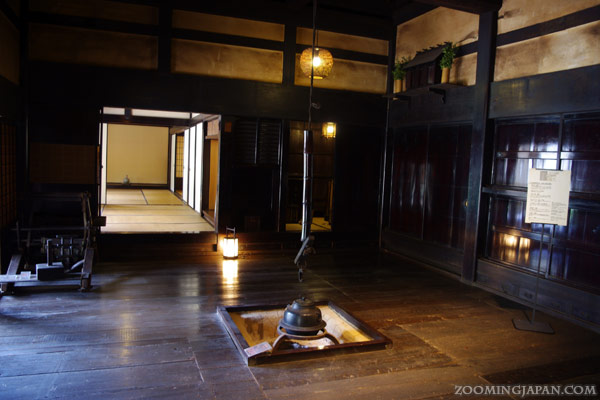
Inside you can find handicraft articles from the Hida region of Gifu Prefecture where the building originally is from.
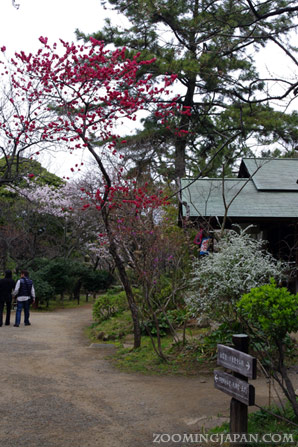
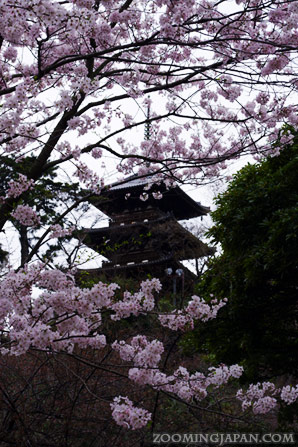
Like mentioned earlier the garden is famous for its seasonal beauty. Spring is a great time to visit. As the cherry blossoms were late in 2012 they weren’t in full bloom when I visited, but yet it was a very colorful scenery I found there!
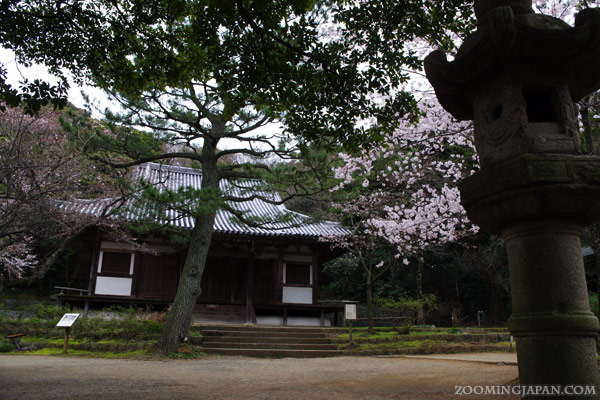
Here you see the Former Main Hall of Tomyoji (旧燈明寺本堂). Just as the three-story pagoda of Tomyoji it was built in 1457 and was relocated to the garden in 1987 from Kyoto.
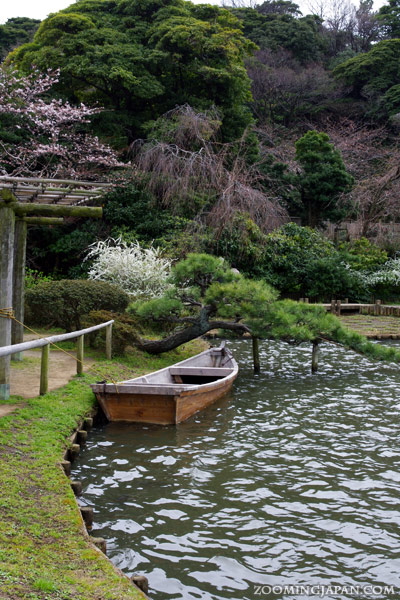
Apart from the buildings I mentioned in this blog post, there are many more that were moved from other locations in Japan to Sankeien Garden in Yokohama. For more information please refer to the official website (Japanese) or the English pamphlet. I don’t want to spoil all the fun here. You should go there and explore the spacious landscape garden yourself.
I really enjoyed my time there. It’s a beautiful Japanese landscape garden and worth visiting in any season! You wouldn’t think that you’re in Yokohama!



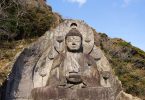





VIELEN DANK für die vielen tollen Beiträge zur Gegend rund um Yokohama! Die Berichte sind toll geschrieben und ich habe ganz viele Anregungen, wo ich noch überall hin kann. :kyah:
Also ein dreifach HOCH auf ZoomingJapan!!! :D
Die Kirschblütenfee
Bitte schön! *g*
Freut mich, dass ich dir ein paar Anregungen geben konnte!
Ich hoffe, es gefällt dir dort, wenn du hingehst! :D
I lived for one year in Yokohama and although the name certainly sounds familiar I never went there. Shows you have happily you become blasé about a place you’re living in.
I hear you!
Maybe you remember that I did some last-minute traveling in my prefecture before I moved.
Of course I couldn’t see everything I wanted and even nowadays I’m angry at myself that I didn’t explore the area more back then, but I guess it’s just normal that you don’t visit places nearby! ^^;
Wow! What a beautiful garden. We missed this on our visits to Yokohama. Will have to put it on the list for next time. Good to see my home prefecture of Gifu represented in the garden as well.
Shirakawa-go is very famous and I love the gassho-style houses. I bet you’ve been there many times already!
It’s indeed a beautiful garden that visitors to Yokohama shouldn’t miss! ^__^
Yeah, Have been to Shirakawago a few times as well as many visits to the Hida region of Gifu where there are many gassho-style houses. It is a beautiful part of Japan to visit and I always try and head up that way at least once a year from Gifu City.
I love the Hida region and have been there several times. There are still a few things I want to see in Gifu and maybe once I go again you have some “insider tips” for me! :D
I remember visiting this garden in high school too! :stars: Unfortunately, all my photos were taken with old disposable film :sweatdrop: But looking through your photos really brings back great memories of my time in high school with my friends :thumbup: Super cool!
Wow, what a great idea for a school trip! No wonder you had fun! ^^
Kirei.. domo arigatou zooming japan
You are very welcome, Melanie! ^__^